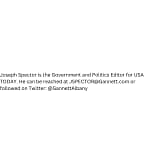Focus on the reader of the news story.
You know the five W’s of journalism:
- Who
- What
- When
- Where
- Why
There is an issue in business that you feel people need to know more about.
Maybe you want people to speak with you and take action, because there is a looming deadline for potential clients, lapsed clients, referral sources or other contacts.
Here’s how to introduce yourself to a reporter so that you will be a source for a news story on the subject.
Start by using the five W’s as a framework for developing your pitch to a journalist.
- Who do you want to read the news story? For example: Families of teenage students or toddlers. People with aging parents. Consultants in a specific industry. Residents in a certain neighborhood or town. Be as specific as possible about the characteristics or criteria of the target audience.
- What idea will they read about? Think of their situation before they learned this information; compare it to after they hear about it and take the steps you recommend.
- What will they do next with your idea? Will they want to speak with you to get more information? Will they be prompted to read a page on your website or download information there? Make it easy to connect with you by including your email address or phone number. Provide the link to access the material.
- When: Is it time-sensitive? Is there a deadline to take action before a law or regulation goes into effect? Perhaps it is simply a best practice to attend to this issue sooner or eventually.
- Where do they look for news? Perhaps it is the daily newspaper, the regional business magazine or the industry publication. Aim to put yourself and your insight there.
- Why will they care? This is the most important question of all. Everyone listens to the world’s greatest radio station WII-FM (also known as What’s In It For Me). How will your idea help someone save time, save money or make more money?
Once you have answers to the five W’s for your seed of an idea, you‘re ready to move forward and contact reporters.
This Month’s Tip
Use a pitch letter to initiate a conversation with a reporter.
- Indicate your familiarity with the reporter’s frequent news stories on topics aligned with your idea.
- Demonstrate your knowledge of the subject and cite a recent article, blog post, newsletter or speaking engagement to corroborate your status as an authoritative and reliable source.
- Pitch the story idea and underscore how readers will benefit from your insights.
- Include your contact information to facilitate follow-up with you.
- After a week or two, give the reporter a call or send a second email. Only use a shorter time frame when a deadline is imminent.
Here’s the letter I often use to introduce my clients to journalists. Adapt it for your use in the first person.
See also:
Four Ways to Find a Reporter’s Email Address
Five Tips to Maximize a Media Phone Interview
Contact
Let’s put the five W’s to work for you. Contact me to brainstorn some ideas for hot topics and news stories at Janet@JanetLFalk.com, book an appointment here or call me at 212.677.5770. Let’s start gathering names and emails for your media list. Wait for a reporter to call you is not one of the five W’s.
Click here to read prior issues of this newsletter.
Click here to subscribe to this monthly newsletter and make sure you don’t miss the next issue.














 Seven lessons for guests on a podcast interview.
Seven lessons for guests on a podcast interview. Look beyond your target market.
Look beyond your target market. Check your progress at mid-year.
Check your progress at mid-year. Raise the flag wherever you can.
Raise the flag wherever you can.